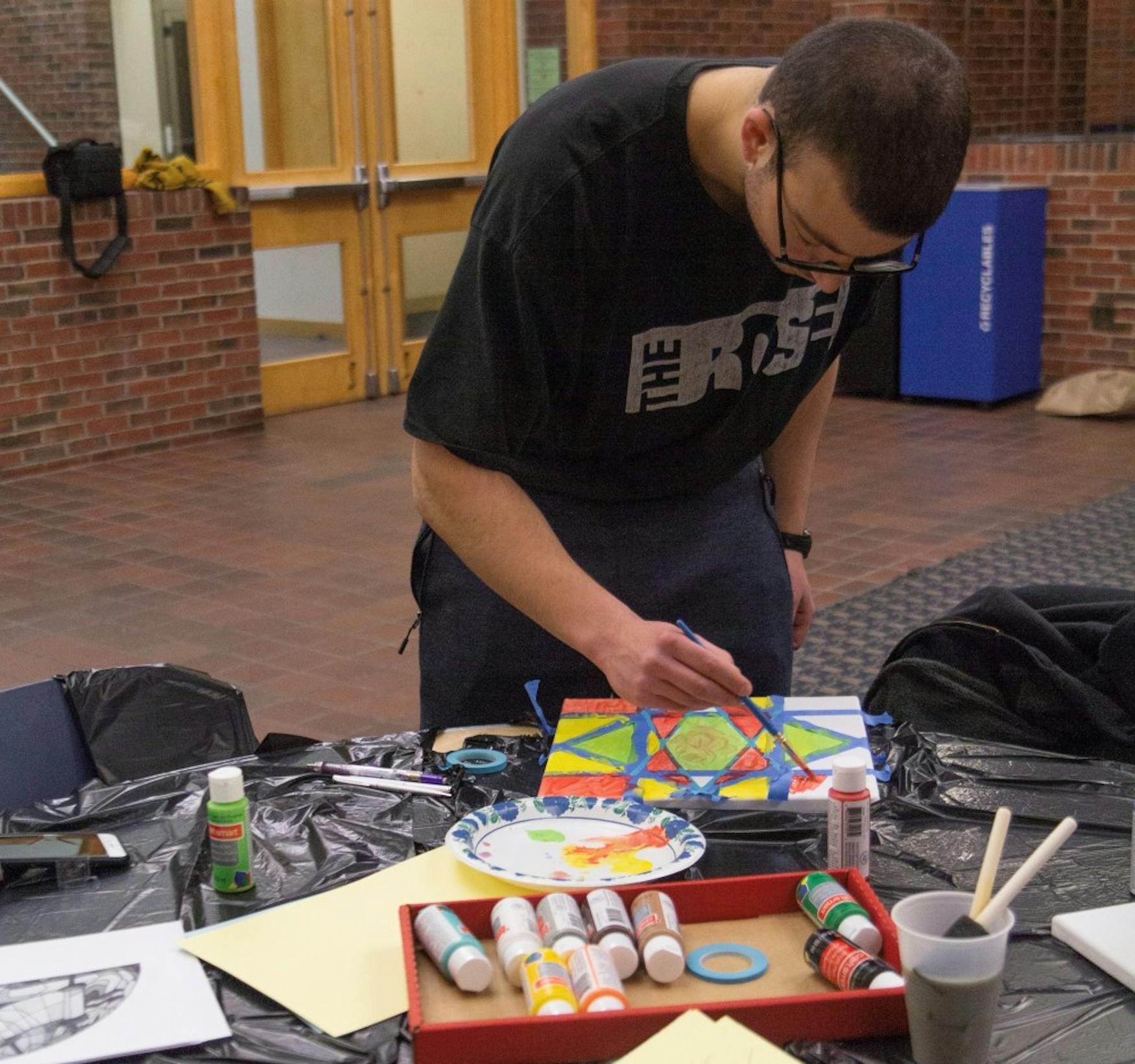Paint night teaches students about Jewish, Islamic art
Common Ground hosted a paint night on Thursday for members of the Brandeis community to make and learn about Islamic and Jewish art. Common Ground is a student-run club whose mission is “to unite Brandeis students for the purpose of understanding Judaism and Islam as complex religions with a lot of similarities and differences.” Its slogan is “together we can help everyone gain better knowledge of two commonly misunderstood religions,” according to their Facebook page.
The paint night was organized for students to relieve finals stress and to explore the similarities and differences in art in the two religious communities. The night started with Amna Ahmed ’19, the co-president of the club, introducing the materials that the participants would use. Tables in the Usdan Student Center’s International Lounge were divided in half for canvas paintings and tissue-paper stained-glass art.
After attendants chose their tables, Prof. Suleyman Dost (NEJS) gave a brief talk about art in Islam. He explained that in the past, there were human figures in Islamic art, but it was rare. The Islamic art that we see today is devoid of animal and human figures for the purpose of preventing the deification of these figures.
“It looks like after a while they thought that the best way of representing God and the divinity in general in art would be through geometric images,” he said. He explained that Muslims believe that “art is there to show the word of God and its orderliness. And what is more orderly than mathematics itself? Than geometry itself?”
Because of this view of art, Muslim artists painted roses to symbolize the Prophet Muhammad, according to Dost. He also spoke about how Muslims embraced early Greek philosophy and the geometric and mathematical teachings of Plato and Aristotle to represent art “as the imitation of the order of the universe.”
After Dost’s lecture, Nathan Inkateshta ’19, Common Ground’s other co-president, talked about Jewish art. According to Inkateshta, images were widely used in Jewish art around and after the second temple period, which “lasted between 530 BCE and 70 CE, when the Second Temple of Jerusalem existed,” but usage of human figures declined throughout the Middle Ages. Additionally, he explained that usage of Hebrew calligraphy was common in Jewish art, just as the usage of Arabic calligraphy was common in Islamic art.
Adina Scheinberg ’21, treasurer of Common Ground, said in an interview with the Justice that the club held a lot of smaller dialogue sessions before, with specific topics “like prayer or religious texts or public expressions of faith.” She added, “I was particularly excited to have this event because it is comparing the cultures of Judaism and Islam and talking about the ways they are similar or different.”
Ahmed explained in an interview with the Justice that the event’s purpose was “to bring people together to connect over something that we value.” She added that she thinks the artwork that the participants created will help people “remember that there have been similarities in art in Judaism and Islam in history, but there are also ways that two art forms are unique in [the] ways that they have been used by both communities to make statements about what their religions are.”



Please note All comments are eligible for publication in The Justice.